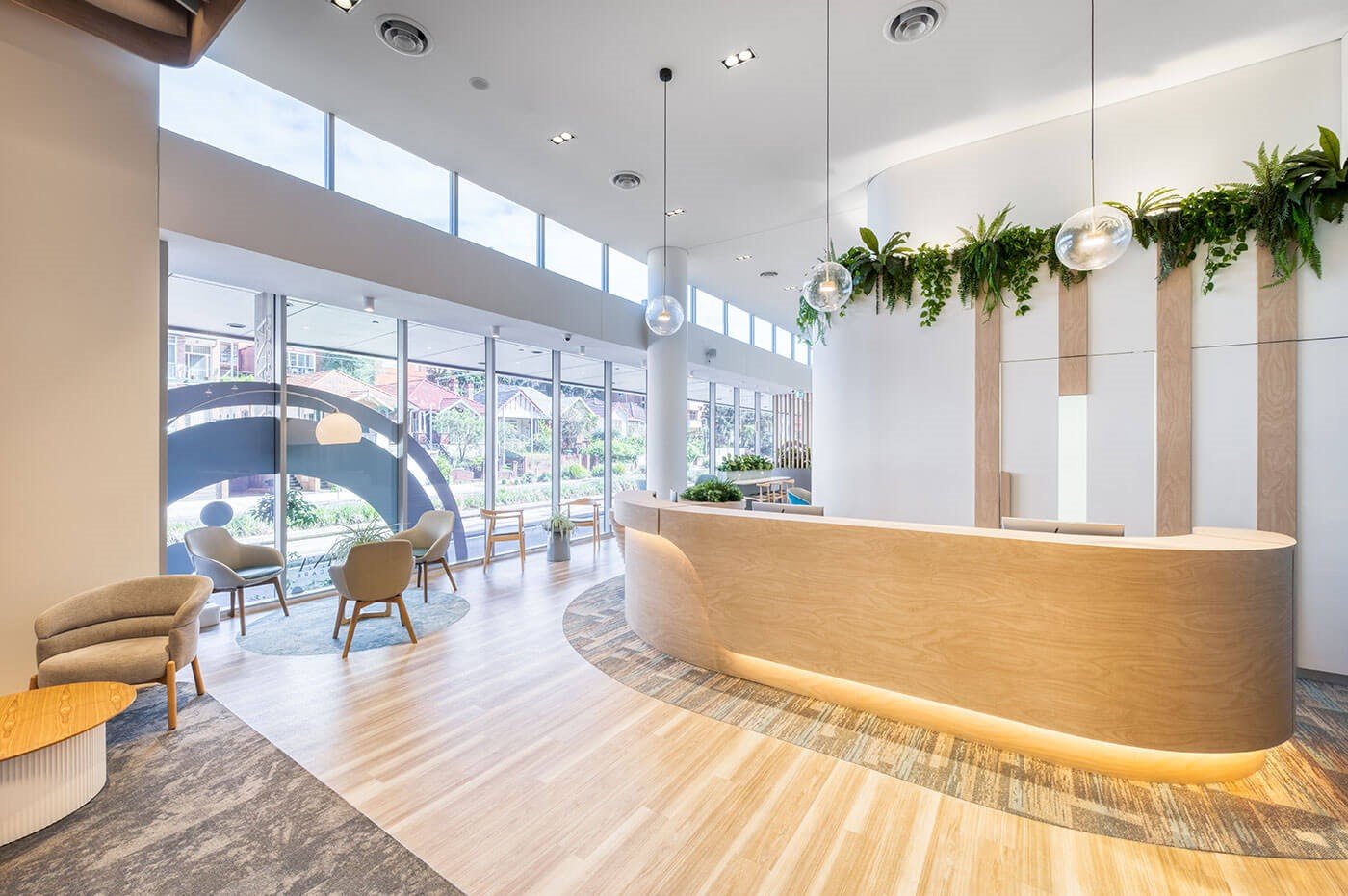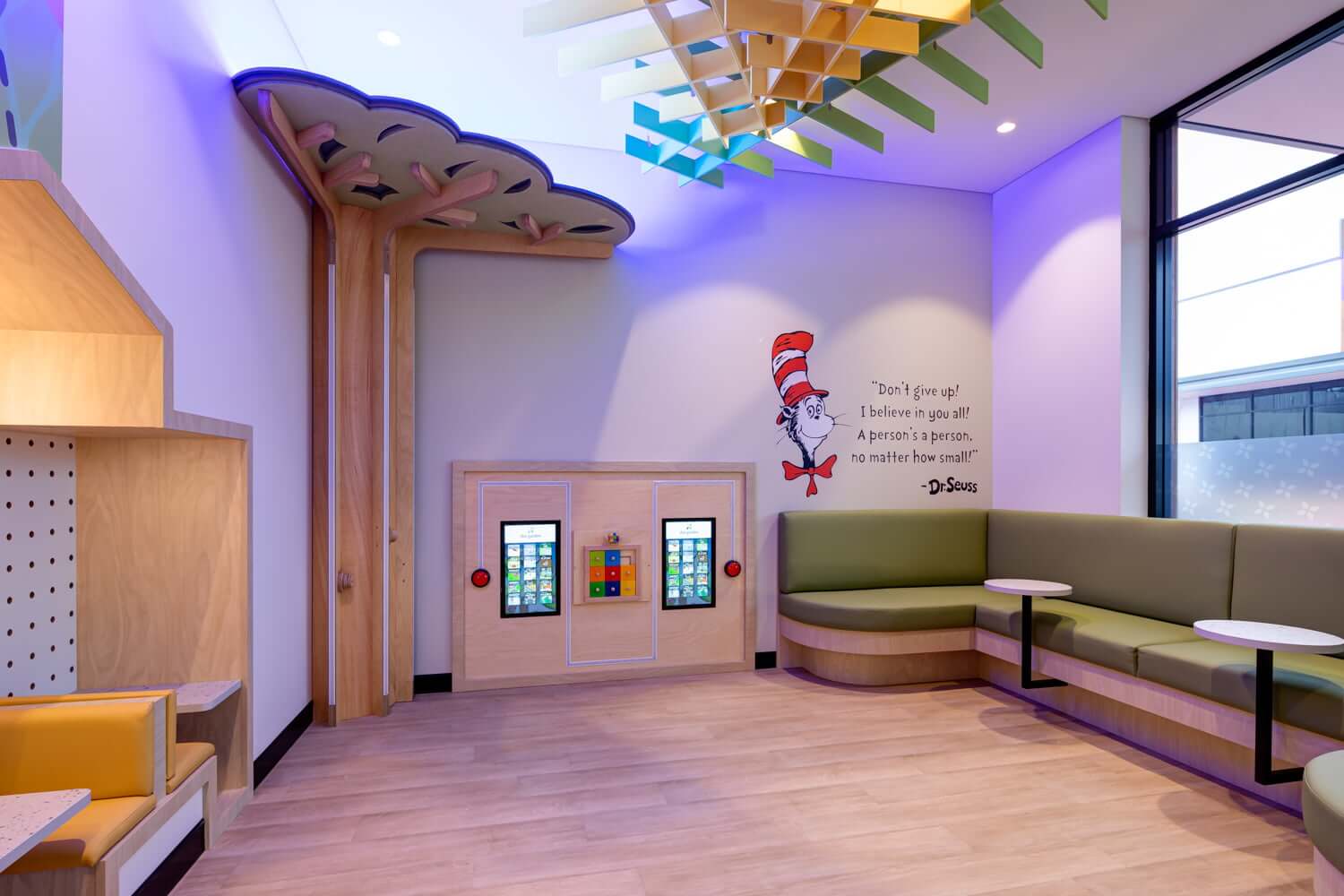When we talk about future-focused healthcare design, inspiration often comes from beyond the clinic. That’s why this year, we sent our designer Darcy Miller to Milan’s Salone del Mobile 2025, the global epicentre of interior innovation. With over six years in healthcare design, Darcy knows how to filter visual trends through a clinical lens, always looking for ways to enhance patient experiences, staff workflow and spatial wellbeing. This year’s theme was ‘Thought for humans’, the perfect topic for healthcare design.
Here are Darcy’s top five design takeaways from Milan 2025, and how they could translate into the healthcare environments of tomorrow.
1. Textured & Coloured Glass: A New Take on Privacy
One of the most noticeable materials at Salone was glass, but not the clinical, high-gloss kind. Think bubbled textures, rippled waves, soft greens and burnt ambers. Used in furniture, partitions, and even tapware, the effect was elegant yet grounded.
In healthcare, we often need light and separation in the same space. Textured or coloured glass could become a beautiful alternative to blinds or frosted panels, offering visual warmth, acoustic value and subtle privacy in waiting areas, consultation rooms or breakout spaces.
“Glass was everywhere, but not how you’d expect. Rippled, bubbled, amber-toned. It’s privacy without the frost, an old classic revival with a modern twist.” – Darcy
2. Colour Drenching: Designed to Be Felt
Bold colour is having a moment, but not just in accents. Entire spaces at Salone were immersed in a single hue, layered through multiple shades and textures. A Kartell installation used matte, gloss, and plush materials in varying reds to create cohesion without monotony.
In a healthcare context, immersive colour blocking can shift mood and provide a natural wayfinding. Imagine a paediatric treatment zone in calming blues, or a staff respite room washed in sage and sand. Colour, used intentionally, becomes more than decorative; it becomes directional and therapeutic.
“When you surround someone in colour, it feels less intense than just seeing it in small hits. The body relaxes into it.” – Darcy
 3. Fluidity: Curves That Invite and Soften
3. Fluidity: Curves That Invite and Soften
Curvature design was a timeless theme; architectural cutouts in walls to create arched openings, rounded joinery, and soft transitions between materials created intuitive and welcoming spaces.
In healthcare, where anxiety levels can be high, curved forms can soften the experience of moving through a building. From curved reception desks to arched corridor transitions, these design decisions can make clinical spaces feel more human.
“Curvature design is becoming more versatile than ever. They can guide you through space without harsh stops or edges.” – Darcy
4. Connectedness: Collaboration Through Material Integration
This year’s standout wasn’t a single material, but how they were brought together. Lighting integrated into joinery, textiles used on cabinetry fronts, and LED elements extending from cabinets down to floors to guide the eye (or even the body) through space.
In clinical spaces, this is a game-changer for intuitive wayfinding. Imagine emergency lighting that’s seamlessly built into joinery and flooring. Or warm ambient lighting that wraps around cabinetry, softening harsh corners and enhancing safety after hours.
“One of the most exciting things I saw was industries collaborating, like LED wallpaper. It’s lighting, art, and wall finish in one.” – Darcy
5. Metalwork & Sculptural Lighting: Material Honesty Meets Art
There’s a noticeable shift toward sculptural lighting. Pendant lights that look like water splashes, suspended in time. Likewise, metalwork is stepping out from behind the scenes, featured in cabinetry, desk frames and drawer units. Perforated, brushed, powder-coated metal brought depth and edge to otherwise soft spaces.
“Metalwork in joinery was impressive to see. It is not typically seen in Australia as a standard material choice, which is surprising considering our rugged terrain and abundance of natural resources. Yet seeing it in person, I experienced a sense of familiarity.
In healthcare, these materials offer both form and function. Metal joinery can withstand high-use environments and adds a refined industrial aesthetic. Sculptural lights, when used strategically, can turn waiting spaces into art galleries, places of pause and distraction, to improve the patient experience.
As a creative and lover of art, seeing lighting designers’ exploration of sculptural elements was very exciting to witness. Lights are not just sources of illumination anymore; they are strategic distractions when used in healthcare settings.” – Darcy
 Final Thoughts
Final Thoughts
Salone del Mobile 2024 wasn’t just about style, it was about feeling. About how a space wraps around you and fully immerses you in the moment. About how design can guide, reassure, and energise without words.
As Darcy puts it:
“Good design in healthcare doesn’t just meet a brief. It reads the room, it senses what people need, often before they do.”
At Perfect Practice, we’re committed to staying ahead of design thinking so that every healthcare space we create is built for both performance and empathy.
Want to explore how these global ideas could work in your space?
Let’s start a conversation.


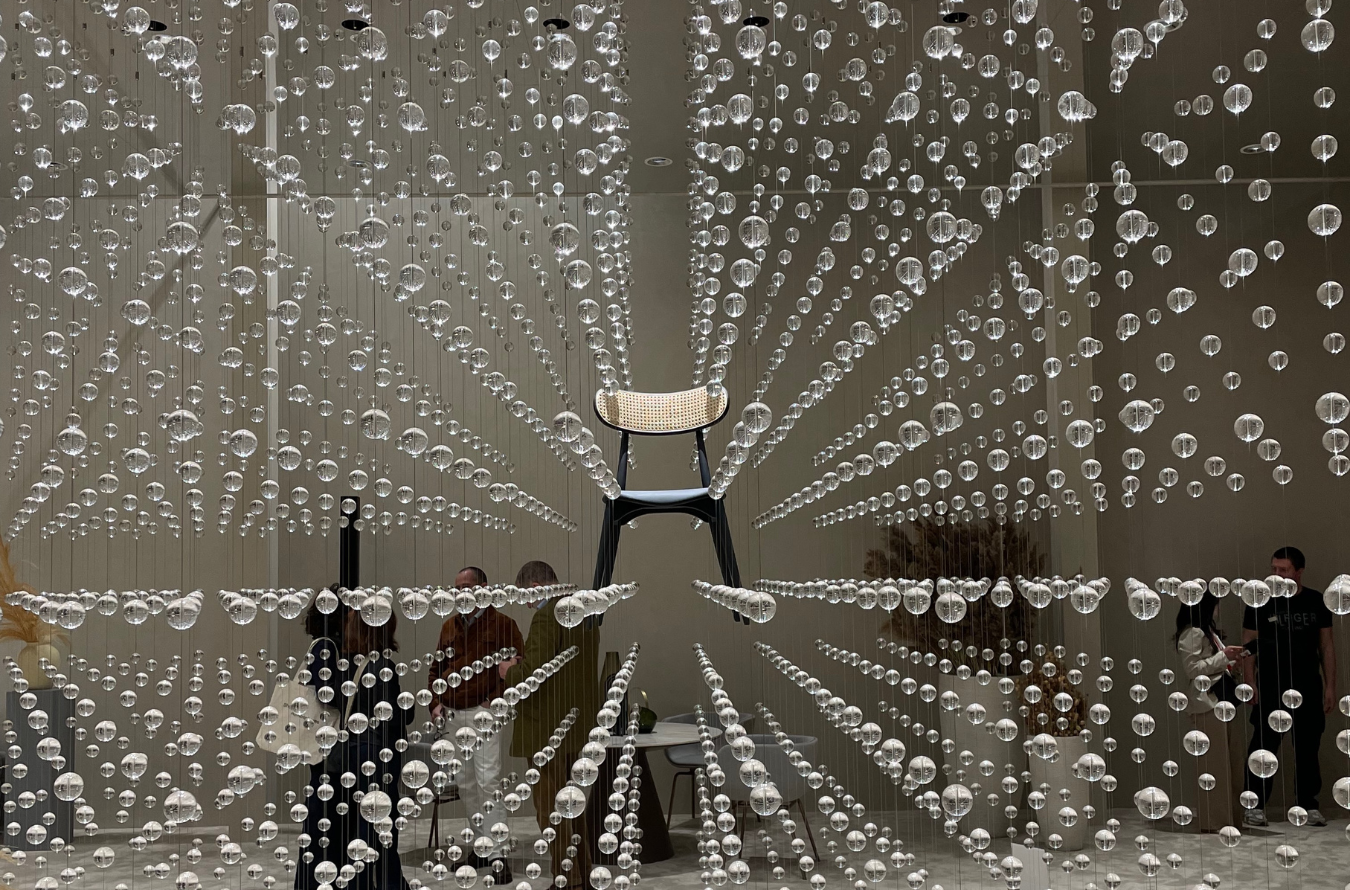
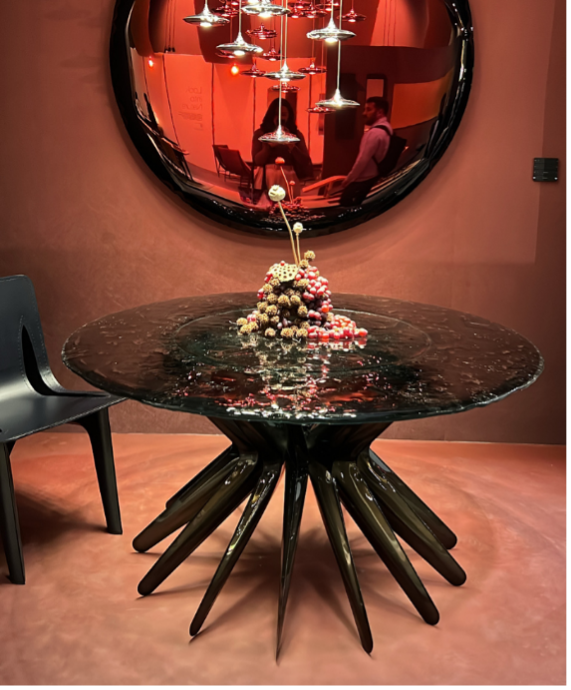


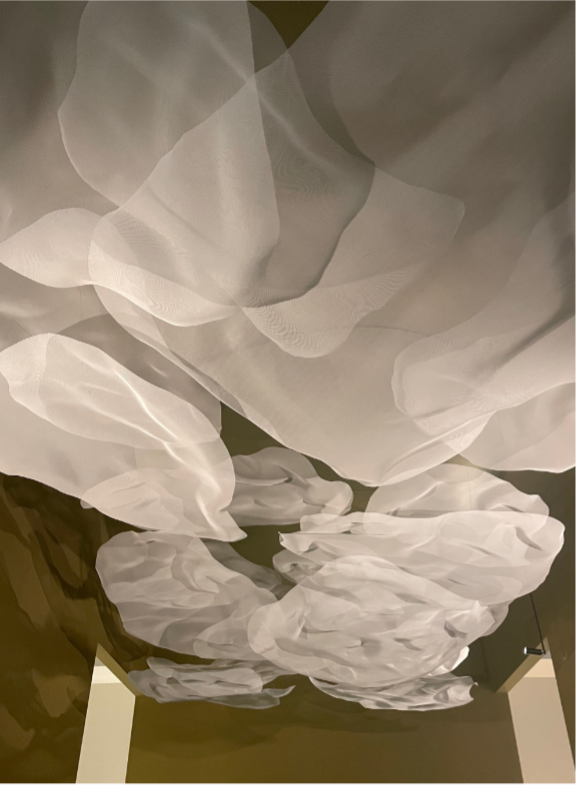 3. Fluidity: Curves That Invite and Soften
3. Fluidity: Curves That Invite and Soften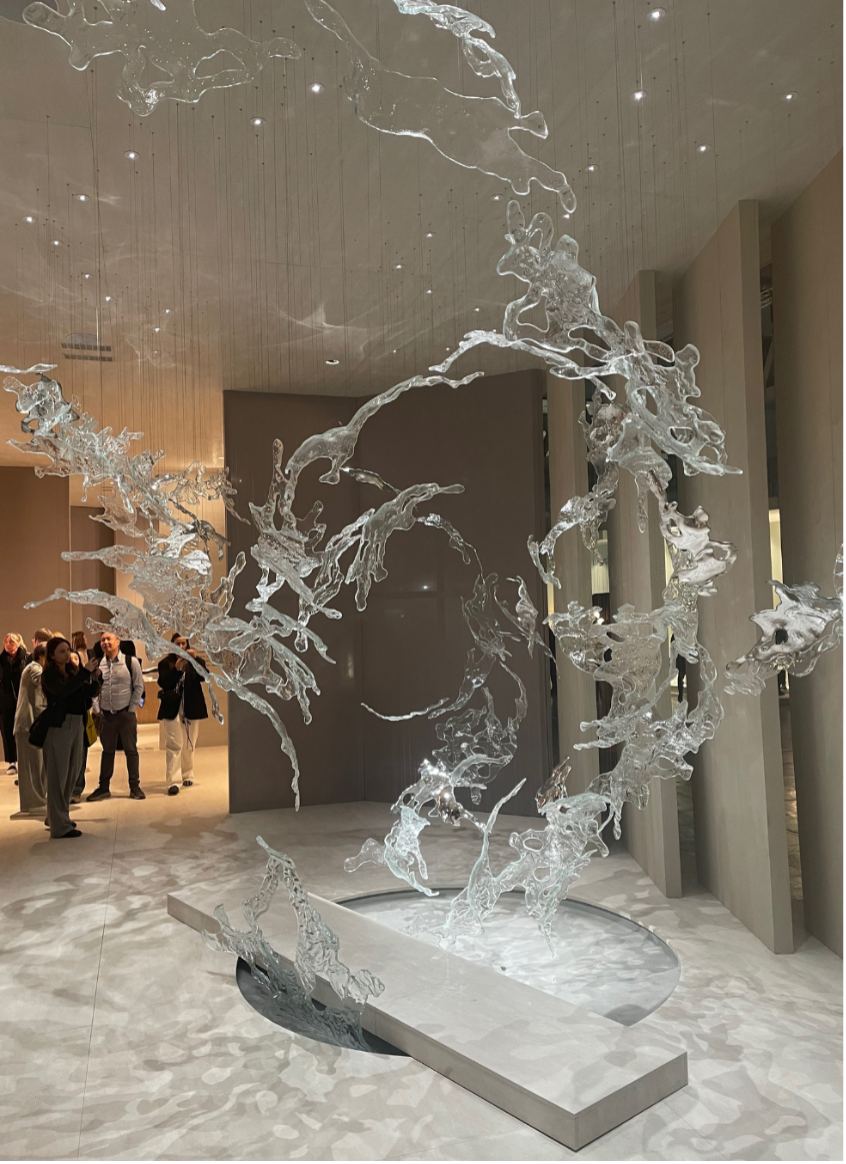 Final Thoughts
Final Thoughts